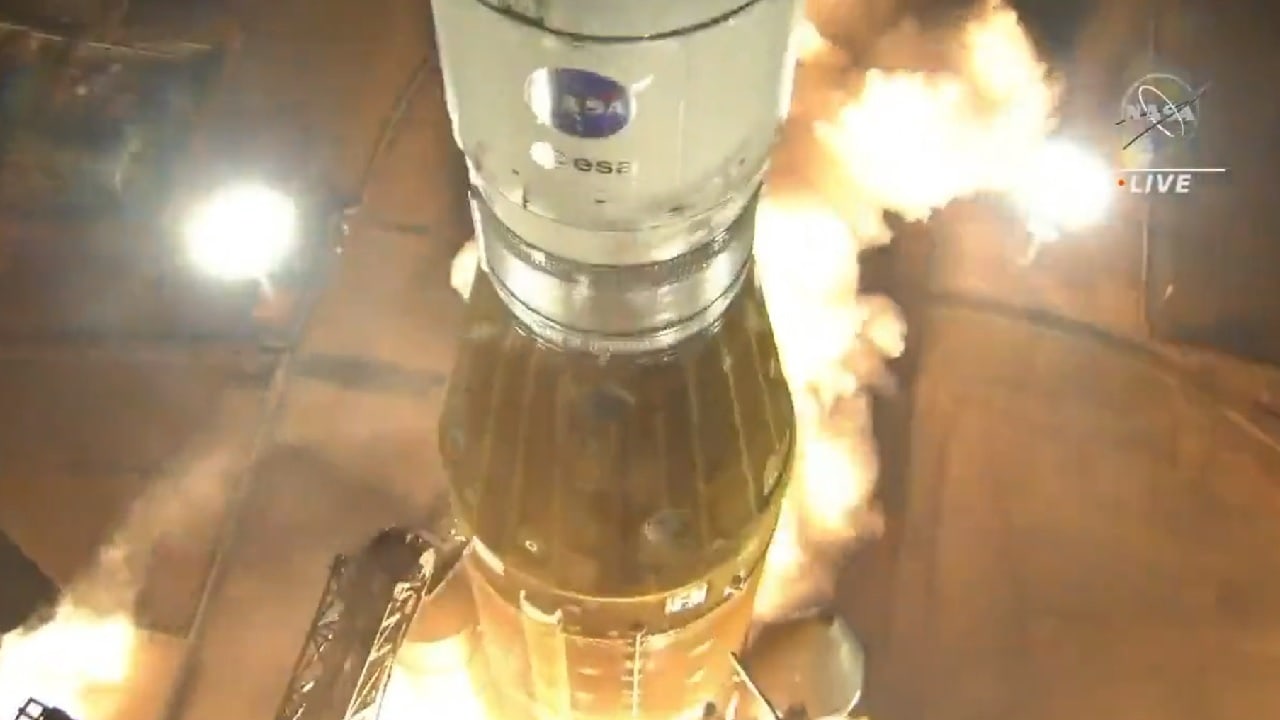It was years in the making but lasted just 25 and-a-half days – the first small step in what will be the next giant leap for the future of manned space travel. NASA’s Artemis I mission ended in success on Sunday as the Orion spacecraft splashed down in the Pacific Ocean, west of Baja California at 9:40 am local time.
During the record-breaking mission, the unmanned capsule traveled more than 1.4 million miles on a path around the moon and returned safely to Earth.
The splashdown was seen as a significant milestone for the Artemis I mission, which began with a successful liftoff of NASA’s Space Launch System (SLS) rocket on Nov. 16, from Launch Pad 39B at NASA’s Kennedy Space Center in Florida.
“The splashdown of the Orion spacecraft – which occurred 50 years to the day of the Apollo 17 Moon landing – is the crowning achievement of Artemis I. From the launch of the world’s most powerful rocket to the exceptional journey around the Moon and back to Earth, this flight test is a major step forward in the Artemis Generation of lunar exploration,” said NASA Administrator Bill Nelson.
“It wouldn’t be possible without the incredible NASA team. For years, thousands of individuals have poured themselves into this mission, which is inspiring the world to work together to reach untouched cosmic shores. Today is a huge win for NASA, the United States, our international partners, and all of humanity.”
Over the course of the nearly month-long mission, NASA tested Orion in the harsh environment of deep space before flying astronauts on Artemis II. That included two lunar flybys, with the capsule coming within 80 miles of the lunar surface. And at its farthest distance during the mission, the unmanned craft traveled nearly 270,000 miles from Earth, more than 1,000 times farther than the orbit of the International Space Station (ISS).
During the flight test, Orion stayed in space longer than any spacecraft designed for astronauts has done without docking to a space station. While in a distant lunar orbit, Orion surpassed the record for distance traveled by a spacecraft designed to carry humans, previously set during Apollo 13.
Prior to entering the Earth’s atmosphere, the crew module separated from its service module – the propulsive powerhouse provided by ESA (European Space Agency). During re-entry, Orion endured temperatures about half as hot as the surface of the Sun at about 5,000 degrees Fahrenheit. Within about 20 minutes, Orion successfully slowed from nearly 25,000 mph to about 20 mph for its parachute-assisted splashdown.
A fleet of recovery vehicles was ready and waiting. This included the USS Portland (LPD-27), a San Antonio-class amphibious transport dock. It was a once-in-a-lifetime moment for the crew, which underwent specialized training to aid in the recovery of the spacecraft and move it to the warship’s well deck.
Just the Beginning
Even before Orion I began its mission; NASA has been planning for the next one – which will see humans returned to the lunar surface.
“With Orion safely returned to Earth we can begin to see our next mission on the horizon which will fly crew to the Moon for the first time as a part of the next era of exploration,” said Jim Free, NASA associate administrator for the Exploration Systems Development Mission Directorate. “This begins our path to a regular cadence of missions and a sustained human presence at the Moon for scientific discovery and to prepare for human missions to Mars.”
Though the Artemis I mission had been delayed several times this year, due to technical issues as well as the hurricanes that slammed Florida – site of the launch site – earlier this year; the timing was somewhat serendipitous as it occurred 50 years after the final Apollo mission.
NASA is now looking forward to its next undertaking, which will allow NASA to land the first woman and the first person of color on the surface of the Moon, paving the way for a long-term lunar presence and serving as a stepping stone for astronauts on the way to Mars. Though that mission is scheduled to launch in 2024, there have been warning signals that the program may have difficulty sticking to the tight schedule.
However, the U.S. is now engaged in a new space race with China – and it would seem that NASA and the United States Space Force will do whatever it takes to get back to the moon before a Chinese boot is on the ground on the lunar surface.
A Senior Editor for 19FortyFive, Peter Suciu is a Michigan-based writer. He has contributed to more than four dozen magazines, newspapers, and websites with over 3,000 published pieces over a twenty-year career in journalism. He regularly writes about military hardware, firearms history, cybersecurity, and international affairs. Peter is also a Contributing Writer for Forbes and Clearance Jobs. You can follow him on Twitter: @PeterSuciu.

